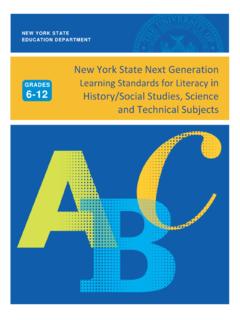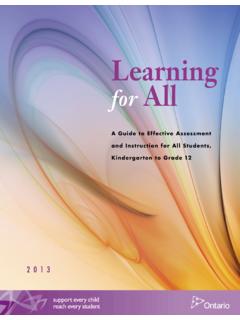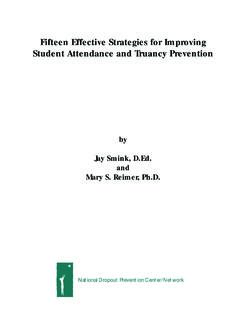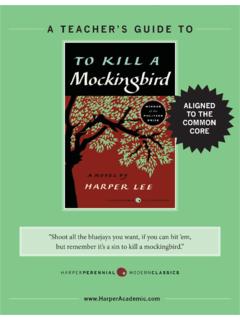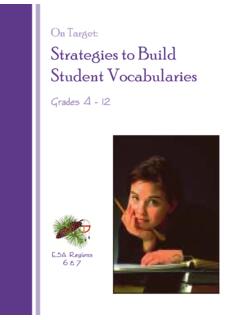Transcription of Building an Effective Financial Literacy Program
1 Building an Effective Financial Literacy Program 1. Like all learning, Financial education is a process that should begin at an early age and continue throughout life. This cumulative process builds the skills necessary for making critical Financial decisions that affect one's ability to at attain the assets, such as education, property, and savings, that improve eco- nomic well-being.. Alan Greenspan Former Federal Reserve Chairman Financial Literacy is the ability to make Chapter Overview informed judgments There is no one prescribed avenue for teaching Wisconsin's Model Academic and to make Effective Standards for Personal Financial Literacy . This curriculum guide is intended to assist school districts in determining the best way to develop a comprehen- decisions regarding the sive K-12 Financial Literacy Program for their students. use and management of School districts are already teaching many of the standards.
2 The challenge money.. is to achieve full implementation of Wisconsin's Model Academic Standards National Foundation for for Personal Financial Literacy across the grade levels, thus moving to a well- Educational Research planned, comprehensive Program resulting in Financial Literacy for all of our students. Where Are Financial Literacy Standards Currently Being Taught? Throughout Wisconsin, many high schools have stand-alone Financial Literacy classes. For example, economics classes, usually found in the social studies departments, incorporate Financial Literacy concepts. Business education de- partments offer courses in personal finance or Financial management. Family and consumer education departments offer consumer economics or independent living courses. Marketing departments teach Financial Literacy concepts in en- trepreneurship. Mathematics departments teach Financial Literacy in consumer mathematics.
3 Financial Literacy is also a critical component of many courses in agriculture departments. In the middle schools, Financial Literacy concepts are usually covered in the business education department and the family and consumer sciences education department. At the elementary level, the mathematics and social studies cur- riculums are the most likely places to find Financial Literacy concepts. Special education, gifted and talented or after school programs may deliver personal Financial Literacy instruction. Many schools implement the personal Financial Building an Effective Financial Literacy Program 5. Literacy concepts through projects and outside resources. Junior Achievement (JA) programs are available for PK-12 classrooms. Financial Literacy standards may also be addressed through student organi- zations like Future Business Leaders of America (FBLA), Family, Career and Community Leaders of America (FCCLA), Future Farmers of America (FFA), SkillsUSA, DECA, and Health Occupation Students of America (HOSA).
4 Stu- dents in these Career and Technical Student Organizations (CTSOs) may dem- onstrate their knowledge of Financial Literacy through projects or competitive Modern life is such events designed to test Financial Literacy . Peer Education programs are another that almost from the avenue for delivering these standards. get-go, as people enter Some school districts in Wisconsin address Financial Literacy concepts into the job market, through events, such as a Reality Store. Financial institutions may offer fi- nancial seminar events for students and parents. they have to make eco- nomic decisions and Financial decisions. What Are the Key Characteristics of an Effective Dwight Jaffee, Professor of Financial Literacy Program ? Banking, Finance A formula for success for any Financial Literacy Program includes a motivated teacher, ample resources, relevant curriculum, and community involvement.
5 Planning A Connected Curriculum (DPI 2003) has some guidelines that may assist you in starting a Program (page 28). There are some additional key char- acteristics or principles to keep in mind when developing an Effective Financial Literacy Program : Clear mission and vision Connected to the standards Relevant Community-focused Integrated with other curricular areas Supported with adequate resources Continuous evaluation for effectiveness Learner-centered Effective delivery Clear Mission and Vision All Effective curricular programs begin with a clear mission and vision. The vision should clearly articulate specific goals for the Financial Literacy Program . Districts should create a team to research how other districts are addressing the standards. They should then bring the research to the table and discuss what fits with their district mission.
6 This will help in developing a clear vision for Financial Literacy . 6 Building an Effective Financial Literacy Program Connected to the Standards Wisconsin's Model Academic Standards for Personal Financial Literacy should be the guideline for a comprehensive PK-12 Financial Literacy Program . Wiscon- sin's Model Academic Standards for Personal Financial Literacy have a differ- ent structure than most DPI standard documents. There are content standards which describe what students will know and be able to do. Within each content standard there are core performance standards the big ideas which are similar at grades 4, 8, and 12. Each core performance standard is followed by grade level performance standard what it should look like at grade 4, 8, or 12. See Figure : A. RELATING INCOME AND EDUCATION Content Standard CONTENT STANDARD. Students in Wisconsin will understand the relationship between education, income, career, and desired lifestyle and will develop the planning skills needed to achieve desired Financial goals.
7 BY THE END OF GRADE 4 BY THE END OF GRADE 8 BY THE END OF GRADE 12. STUDENTS WILL: STUDENTS WILL: STUDENTS WILL: Core Understand how career Understand how career Understand how career Performance choice, education, skills, choice, education, skills, choice, education, skills, Standard entrepreneurship, and entrepreneurship, and entrepreneurship, and economic conditions economic conditions economic conditions affect income. affect income. affect income. Be aware of how Relate how career Evaluate and career choices, education choices, education choices, demonstrate how career choices, and skills affect skills, entrepreneurship, and choices, education choices, Grade Level income. economic conditions affect skills, entrepreneurship, and Performance income. economic conditions affect Standard Recognize the income. difference between a job Describe the and a career.
8 Unique characteristics of Analyze how both a job and a career. personal and cultural values may impact Financial decisions. Figure The task force formed the content standards as the essential ideas students need to know and be able to do. Then specific concepts were spiraled through grade levels in the performance standards. For example, performance standard states that students will Explain how income affects lifestyle choices and spending decisions. To ensure that students walk away with a deep under- standing of this content standard, a real-world concept was chosen and spiraled through the grade levels using the framework. The concept is studied in an in- creasingly sophisticated manner using both Bloom's Taxonomy and the appli- cation model as the grade level increases. This is what the concept looks like: 4th Grade Explain how income affects spending.
9 8th Grade Examine how income affects choices and spending decisions. 12th Grade Develop a plan to designate how income affects decisions to purchase and spend. WISCONSIN'S MODEL ACADEMIC STANDARDS 3. Building an Effective Financial Literacy Program 7. Relevant All curricular programs should be relevant. Programs focusing on personal Financial Literacy should be no different. Wisconsin's Model Academic Standards for Personal Financial Literacy are similar to previously established model aca- demic standards that set forth the knowledge and skills students need to acquire. I am one who believes The personal Financial Literacy standards include a rigor and relevance frame- work to illustrate how knowledge grows/spirals with experience and practice. that all 10-year- The rigor and relevance framework is a tool developed at the International olds should have Center for Leadership in Education.
10 The framework uses a knowledge taxon- the competencies in omy, often referred to as Bloom's Taxonomy, (Bloom, , Mesia, , and reading and writing Krathwohl, 1964, Taxonomy of Educational Objectives) and the applica- tion model to determine rigor and relevance. First is the knowledge taxonomy, and computation, a continuum based on the six levels of Bloom's Taxonomy. The first level in- which give them the volves acquiring knowledge and being able to recall or locate that knowledge. potential to be lifetime The higher levels identify the more complex ways in which individuals use knowledge. For example, students who use several pieces of knowledge and learners. And I see combine them in both logical and creative ways are exhibiting a high level of Financial education rigor in learning. as an important part The second continuum, known as the application model, is one of action.

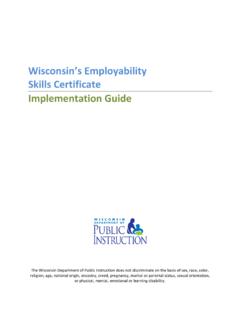
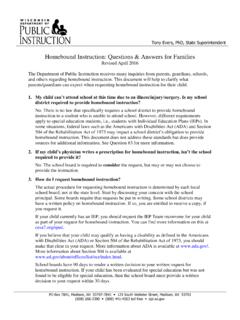
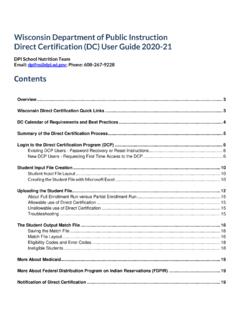
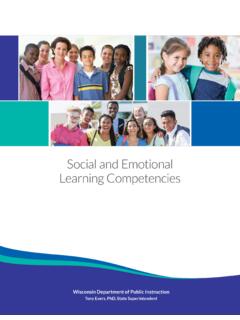

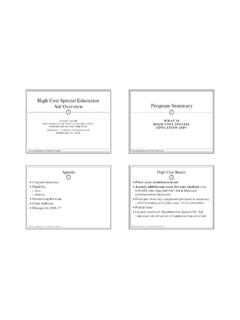
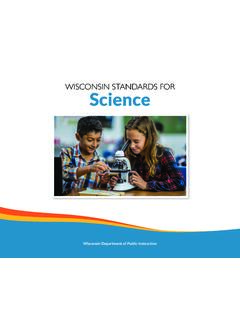



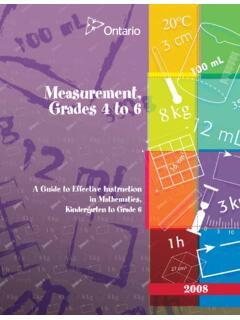
![The Ontario Curriculum, Grades 1-8, Language [revised] 2006](/cache/preview/d/5/3/5/d/c/7/4/thumb-d535dc7439a04910d8a17bf7f1d6b83f.jpg)
